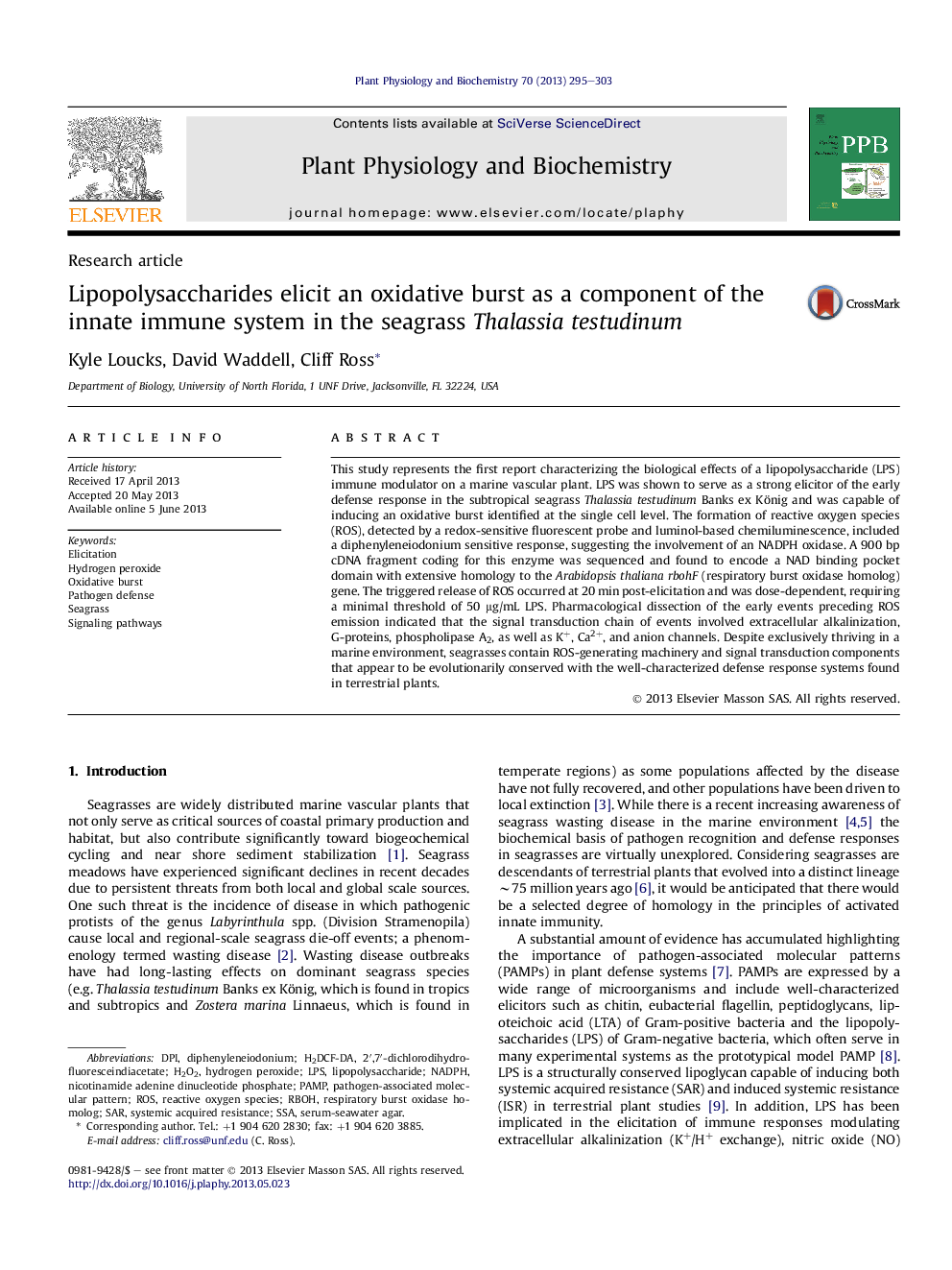| Article ID | Journal | Published Year | Pages | File Type |
|---|---|---|---|---|
| 8355644 | Plant Physiology and Biochemistry | 2013 | 9 Pages |
Abstract
This study represents the first report characterizing the biological effects of a lipopolysaccharide (LPS) immune modulator on a marine vascular plant. LPS was shown to serve as a strong elicitor of the early defense response in the subtropical seagrass Thalassia testudinum Banks ex König and was capable of inducing an oxidative burst identified at the single cell level. The formation of reactive oxygen species (ROS), detected by a redox-sensitive fluorescent probe and luminol-based chemiluminescence, included a diphenyleneiodonium sensitive response, suggesting the involvement of an NADPH oxidase. A 900 bp cDNA fragment coding for this enzyme was sequenced and found to encode a NAD binding pocket domain with extensive homology to the Arabidopsis thaliana rbohF (respiratory burst oxidase homolog) gene. The triggered release of ROS occurred at 20 min post-elicitation and was dose-dependent, requiring a minimal threshold of 50 μg/mL LPS. Pharmacological dissection of the early events preceding ROS emission indicated that the signal transduction chain of events involved extracellular alkalinization, G-proteins, phospholipase A2, as well as K+, Ca2+, and anion channels. Despite exclusively thriving in a marine environment, seagrasses contain ROS-generating machinery and signal transduction components that appear to be evolutionarily conserved with the well-characterized defense response systems found in terrestrial plants.
Keywords
DPISARLPSH2DCF-DAPAMPSeagrassNADPHSSARbohROSHydrogen peroxideElicitationpathogen-associated molecular patternrespiratory burst oxidase homologPathogen defenseDiphenyleneiodoniumsystemic acquired resistancelipopolysaccharideSignaling pathwaysnicotinamide adenine dinucleotide phosphateH2O2Oxidative burstReactive oxygen species
Related Topics
Life Sciences
Agricultural and Biological Sciences
Plant Science
Authors
Kyle Loucks, David Waddell, Cliff Ross,
